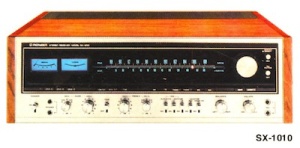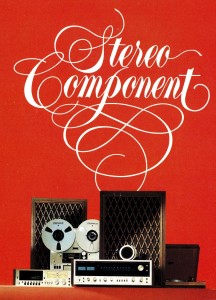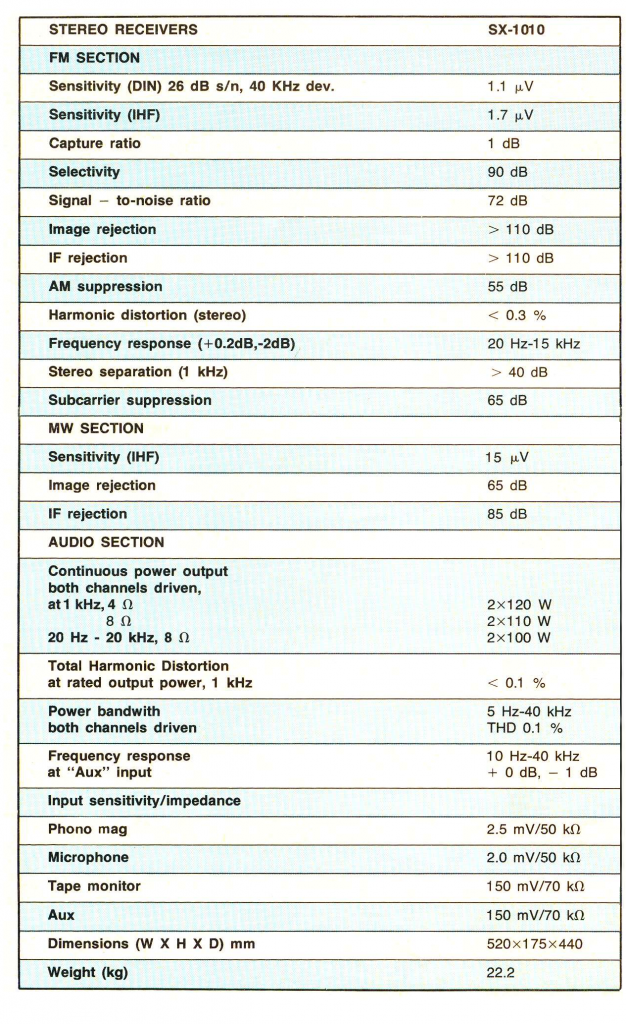1974 RRP: $699.95
2015 Inflation adjusted RRP: $3,269.00
Introducing the Worlds First 100 Watt Per Channel RMS Receiver.
 In 1974 some seriously good music was flooding the airways, Queen had released their “Killer Queen” anthem, Bowie had released Diamond Dog and Kiss had their debut album, but what Receiver could do these bands the justice they deserved?
In 1974 some seriously good music was flooding the airways, Queen had released their “Killer Queen” anthem, Bowie had released Diamond Dog and Kiss had their debut album, but what Receiver could do these bands the justice they deserved?
 Thankfully this was the decade that saw solid state HiFi evolve from being cute little music boxes that sat in the corner of ones lounge room to Monster’s capable of scaring small children and women with weak bladders. Queen, Bowie and Kiss would not be disappointed!
Thankfully this was the decade that saw solid state HiFi evolve from being cute little music boxes that sat in the corner of ones lounge room to Monster’s capable of scaring small children and women with weak bladders. Queen, Bowie and Kiss would not be disappointed!
***

A stripped down Pioneer SX-1010 I’m working on getting ready for restoration. Stay tuned for details of this restoration.
And the first of these Monsters was Pioneer’s top-of-the-line Receiver for 1974, the SX-1010. On it’s release was the most powerful receiver in the world! This iconic piece marks an important milestone in this history of HiFi for it was the first 100 Watt RMS per channel Receiver and was responsible for triggering the famous Receiver Wars of the 1970s.
To break the 100 Watt sound-barrier Pioneer engineered this unit with dual positive/negative power supply coupled with two huge 18,000uf filter capacitors. All this was to drive it’s Direct Coupled, Parallel Push-Pull OCL Power Amplifier. The SX-1010 delivered the promised 100 Watts RMS @ 8 ohms per channel with only 0.1 THD, and did it with ease.
It’s power supply capacitance to output watts ratio was amongst the highest ever seen, and as the decade rolled on other manufacturers would release units with higher watt ratings yet their power supplies could not compete with the SX-1010.

The same SX-1010: Note the Dual +/- Power Supply of the SX-1010 with two massive 18,000uf Filter Caps
This particular Receiver has a very dedicated following, with many preferring them over other Monster Receivers. It’s sound posses warmth and character yet it has a fantastically tight bass response, great detail, and tremendous headroom making it capable of far exceeding it’s power rating for brief periods, allowing your music to be heard in its fullest expression.
Raw power was not the only feature that this receiver had going for it. Promoted as a ‘Command Center’ this unit had inputs for 2 turntables, 3 pairs of speakers, 2 tape decks, 2 microphones, 2 headphones, one aux input and separate connections available for external Dolby processors.
Also featured on this unit was Pioneer’s unique twin-stepped bass and treble tone controls that can custom tailor the listening experience to over 3,000 variations. There is also an option to connect a a 4-channel decoder allowing you to play quadraphonic sources.
 Style wise, this unit continued with the blue back-lit dial displays from the previous X2X series, but this was also the last of the Pioneer’s Stereo Receivers in which this was style was offered. Wrapped in a beautiful walnut veneer cabinet with a warm orange-glow, this unit was also the first to incorporate the toggle switches that would feature on all Pioneer SX Receivers until the end of the decade.
Style wise, this unit continued with the blue back-lit dial displays from the previous X2X series, but this was also the last of the Pioneer’s Stereo Receivers in which this was style was offered. Wrapped in a beautiful walnut veneer cabinet with a warm orange-glow, this unit was also the first to incorporate the toggle switches that would feature on all Pioneer SX Receivers until the end of the decade.
It also featured plastic push buttons arranged lengthwise across the base of the dial display for input selection and other controls each with an illuminated display to give you a heads up display on your chosen settings.
 There is a presumption that for true hi-fidelity gear the best performance can only be achieved through separate component systems, this is certainly not true for 1970s receivers. Sure there are a myriad of cheap and nasty tape, record and radio combinations out there, but these are not to be confused with quality Receiver Amplifiers produced during the 1970s.
There is a presumption that for true hi-fidelity gear the best performance can only be achieved through separate component systems, this is certainly not true for 1970s receivers. Sure there are a myriad of cheap and nasty tape, record and radio combinations out there, but these are not to be confused with quality Receiver Amplifiers produced during the 1970s.
Receiver’s were immensely popular high end units in the 1970s and hence were the flagship products offered by quality manufacturers, the effort that was expended during the Receiver Wars was testament to this fact. Often the latest and finest technologies found its way into the Receivers before trickling down into the remaining product line.
 For comparison Pioneer’s top-of-the-line component amplifier available in 1974, the SA-9100, was rated at only 60 Watts RMS. Many receivers internals were actually built as separate components with shielding provided for each section. Furthermore these Receiver’s also features pre-out’s allowing it to be paired with separate power amplifiers.
For comparison Pioneer’s top-of-the-line component amplifier available in 1974, the SA-9100, was rated at only 60 Watts RMS. Many receivers internals were actually built as separate components with shielding provided for each section. Furthermore these Receiver’s also features pre-out’s allowing it to be paired with separate power amplifiers.
Specifications (Short Version)
- Power output: 100 watts per channel RMS
- Harmonic distortion: less than 0.1%
- Frequency response: 7Hz to 100kHz
- Output: A, B, C, A+B, A+C, B+C (4 to 16 ohms)
- Damping factor: more than 50
- Residual hum and noise: less than 1mV
- Dimensions: 520 x 175 x 440mm
- Weight: 22.2kg
Specifications (Long Version)
Posted In: Coming Soon, Featured, Receivers
Tagged: pioneer sx 1010



Jason
·
I now have an sx1010 in almost as new condition. It is without the most stupendously built highest quality piece of hifi i have ever owned and most certainly the best sounding. It easily trounced my modern day roksan kandy k2 amp in every department and doubtful i.l ever get rid of it.
Billy Ray
·
I have really nice sx1250 I will not sell it on eBay they exchanged your unit for one that doesn’t work then get their money back and you’re stuck with nothing if you’re interested 317 427 8391
Michal
·
I can give quite a few examples of arguably better receivers of now forgotten niche brands made before 1974 with slightly less power rating, but I am going to mention only one very important brand who suffered that fate: Kirksaeter of Duesseldorf/Germany. Take for example Kirksaeter RTX 2000 built already in 1971 with 140W sinus (measured at both channels simultanously with own power supply and not like in many other instances with external one and one channel driven) and 400W peak to peak, 20-20khz +0 -0,2dB. It isn’t the numbers that count after all (different manufacturers measured with different methods at that time) but one thing is certain Kirksaeter made truly amazing receivers from mid 60s to mid 70s. He was a decade ahead of what others made at that time. It is not the RMS rating at say 1kHz sinewave test tone that says a lot about quality of the amplifier. It is the ability to have power reserves of good quality at hand across the full range when needed. So sound quality oriented manufacturers didn’t participate in wattage wars sticking to the rule: quality instead of quantity. Do you think that Per kirksaeter wasn’t able to build a 200wpc receiver before Pioneer did? Pity you do not cover any receiver of the Kirksaeter lineup on your pages… In real life good quality 45wpc paired with properly designed speakers is more than enough to fill the gym sized room, so why bother with monster bull**it?